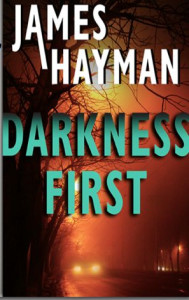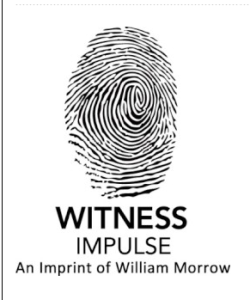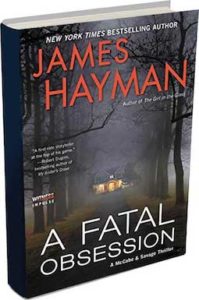From Ox to Smack
Wednesday, May 21st, 2014James Hayman: Anyone who’s read my third McCabe/Savage thriller, Darkness First, knows the story opens with a bad guy named Conor Riordan smuggling 40,000 80mg oxycontin tablets stolen from a Canadian pharmaceutical distribution center in Saint John, New Brunswick back into Eastport, Maine. In the book, these tablets have a street value in Maine of nearly five million dollars. They also are ultimately responsible for the murders of nine mostly not so innocent people.
The idea for Darkness First was initially triggered by a newspaper article I read about prescription drug abuse in Maine and most particularly in poor rural areas like Washington County.
To research the book, I spent a day talking with Sheriff Donnie Smith of Washington County. In our discussion Sheriff Smith estimated that, at that time, nearly half the teenagers and young adults in Washington County were addicted to “ox.” I was stunned by the number and asked where all these pills came from. He told me most were bought and sold in small quantities, some initially stolen from pharmacies, others sold by people who had legitimate prescriptions they hadn’t finished, still others purchased by “doctor shopping”, which means getting multiple prescriptions for pain relief needs from a number of different doctors.
When I pressed for more information, Smith referred me to his liaison with the Maine Drug Enforcement Agency. In discussions with this agent, I learned that the usable supply of “Ox” in Maine was dwindling and that, as a result, prices were going up. The tightening of supply was due, in part, to more energetic enforcement policies and stricter limits on the number of tablets doctors were allowed to prescribe.
It was also due to changes in the manufacturing process. To fight abuse of its product, Purdue Pharma, the number one American manufacturer, had developed a harder time-release coating that made it much more difficult, if not impossible, for addicts to crush and snort the tabs for an instant high. Melting for use in hypodermics was also more difficult. Due to the more limited supply, street price (at the time I talked to him) had risen to $120 for an 80 mg tablet. Far more than most addicts could afford.
I asked if such high prices might not tempt professional drug dealers to import tablets from somewhere else. He agreed that this was indeed possible. He suggested one likely source might be Canada since Canadian manufacturers had yet to adopt Purdue’s new process. In his mind, a worst-case scenario was the one I used in the book, the large-scale theft and smuggling of Canadian 80’s by boat into Eastport.
Unfortunately, the real worst-case scenario turned out to be heroin. Confronted with stricter enforcement policies and sky-high street prices, oxycontin addicts in Maine and elsewhere in New England simply turned to a cheaper and more plentiful alternative.
Over the last three years the supply and use of heroin in Maine and other Northern New England states has skyrocketed. Dr. Mark Publicker, an addiction specialist in Portland, was quoted in a Bangor Daily News article as saying “We had a bad epidemic (before), and now we have a worse epidemic. I’m treating 21-, 22-year-old pregnant women with intravenous heroin addiction. It’s easier to get heroin in some of these places (in Maine) than it is to get a UPS delivery.”
Most of the heroin used in Maine is grown and processed in Colombia and then crosses the border through Mexico. From there substantial quantities flow up through New York to Lowell or Lawrence, Massachusetts and from there on into Maine. Instead of $120 for a single oxycontin tablet, a gram of heroin might cost $45 in Lowell or Lawrence and a single dose $5. An addict can cover his own heroin needs and make a profit selling to others by making the drive. Small time dealers from Maine can find even cheaper prices in Boston and New York.
According to an article by Katharine Q. Seelye in the New York Times, “a $6 bag of heroin in New York City fetches $10 in southern New England but up to $30 or $40 in northern New England. The dealer gets a tremendous profit margin, while the addict pays half of what he might have to shell out for (oxycontin)…”
Today, heroin is not only cheaper and more readily available than oxycontin, the high is stronger. And smack, as its called, is also more addictive. New users who start by injecting small amounts find they quickly need larger and larger doses to get the same high and satisfy the craving.
All too often the results of heroin addiction can be tragic. Heroin killed 21 people in Maine last year, three times as many as in 2011. Sadly, those numbers are likely to rise further.
Katharine Seelye’s piece in the Times describes one case. She writes: “Theresa Dumond, 23, who lives on the streets of Portland, said she sells her body three times a day to support her heroin habit. She lost custody of her two young children about a year ago (“I can’t keep track”), and their father died.
“I’ve lost everything,” she said as she and a companion, Jason Lemay, 26, walked to an abandoned train tunnel, littered with old needles and trash, to shoot up. “The heroin numbs the pain and makes you not care about life,” she said.
Her only concern now is scoring more heroin. She pays no attention to food and sleeps where she is or in a shelter.”
 Darkness First is the first novel in the McCabe/Savage series to feature Detective Maggie Savage, McCabe’s partner, as the key protagonist. Most of the story is told from her point of view. As a male writer I wanted to try writing a novel primarily from a female point of view which turned out to be interesting, especially when it came to describing the sex scenes. The book is also the first of the series that takes place primarily outside of Portland.
Darkness First is the first novel in the McCabe/Savage series to feature Detective Maggie Savage, McCabe’s partner, as the key protagonist. Most of the story is told from her point of view. As a male writer I wanted to try writing a novel primarily from a female point of view which turned out to be interesting, especially when it came to describing the sex scenes. The book is also the first of the series that takes place primarily outside of Portland.

